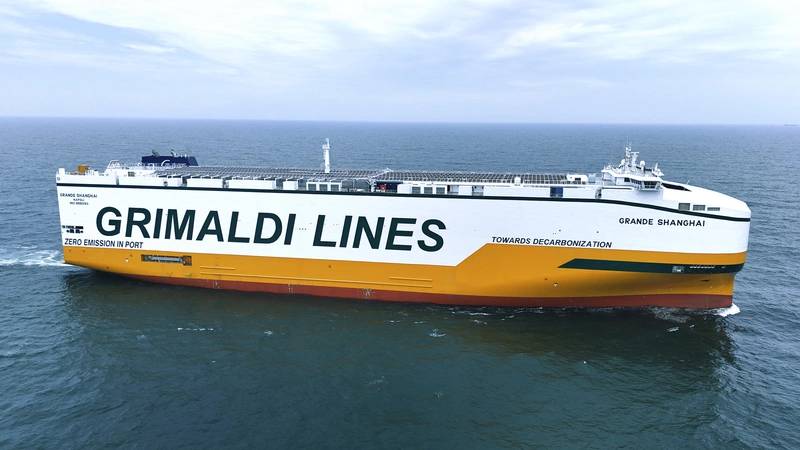Pairing energy storage systems with new fuels is presented as delivering an obvious fuel saving advantage, and the source adds that the partnership brings other advantages too. It also describes a new generation of vessels, exemplified by Grimaldi’s PCTC Grande Shanghai, claimed to reduce—though the scope of that reduction is not detailed. Together, these points outline a shift from isolated trials toward combined approaches aboard working vessels. The framing is straightforward: integrate storage with alternative fuels to pursue operational gains, with at least one high-profile example cited by name. No performance figures, timelines, or technical breakdowns are provided in the source.
The emphasis on collaboration between technologies suggests an approach in which storage and fuels are applied in tandem rather than as stand-alone fixes. While the text does not quantify outcomes, it positions integration as a practical step that can be deployed within real-world ship operations. The stated advantages start with fuel savings and extend to unspecified additional benefits, signaling potential value beyond consumption alone. In the absence of detail, the underlying message is clear: combination strategies are moving from concept toward application, with operators looking to capture multiple gains at the same time.
A new generation of vessels emerges
The reference to a new generation points to design and operational choices that treat energy carriers and storage not as competing options but as complementary elements. The source does not enumerate specific features or ship classes beyond the single named example, yet it frames this generation as defined by integration—systems working together to achieve more than either could achieve alone. Without specifications or metrics, the focus remains on direction rather than detail: an industry narrative shifting toward joint solutions deployed at sea.
The citation of Grimaldi’s PCTC Grande Shanghai anchors that narrative in a concrete case. The vessel is presented as an illustration of what this combined approach looks like in practice, and it is described as being claimed to reduce, with no elaboration on the type or scale of reduction. That careful wording matters. It signals that claims exist, that they are tied to a named ship, and that they are part of the rationale for pairing storage and fuels. Yet it also underscores that the public description stops short of evidence, numbers, or third-party validation.
Fuel savings, as highlighted, form the immediate and most tangible motivation for pairing technologies. Beyond that, the text’s reference to additional advantages invites a broader reading: combined solutions may be adopted to strengthen day-to-day operations and to support evolving ship designs. The point is directional rather than prescriptive. It implies an operational calculus in which storage and fuels are selected together to reinforce practical outcomes on board, even if the precise benefits are not spelled out.
Because the source withholds detail, the significance resides in its framing. It signals that integration is part of current fleet thinking and that examples are not purely theoretical. It also makes clear that public discussion, at least here, has not yet advanced to full disclosure on how reductions are measured, what baselines are used, or how results compare across routes and duty cycles. That gap does not diminish the relevance of the trend; it simply sets expectations for what can be concluded from the available information.
For observers, the takeaway is cautious but notable. A combined approach is being promoted for its fuel saving advantage and for other, unspecified benefits, and it is linked to a named ship positioned as representative of a broader movement. In practice, this frames a path in which maritime stakeholders explore joint deployment of storage and alternative fuels on board. The claims cited will gain weight as supporting data, methods, and verification emerge, but the directional message is already clear: integration is central to how the sector describes progress today.





